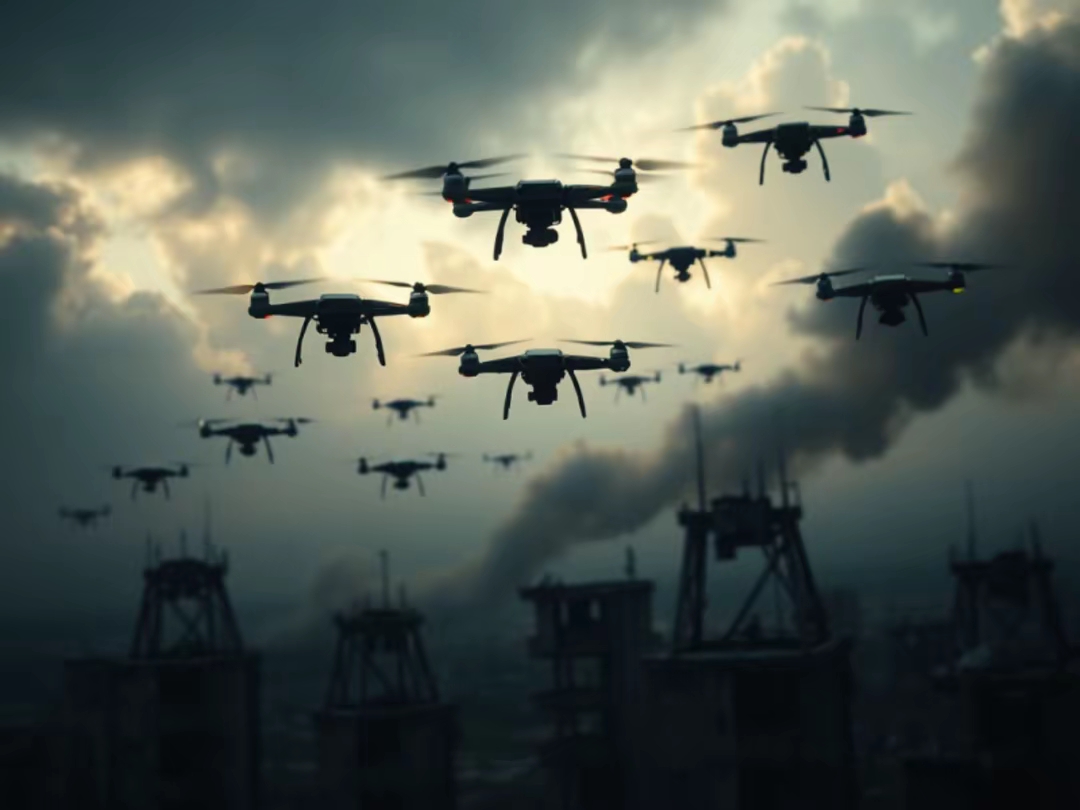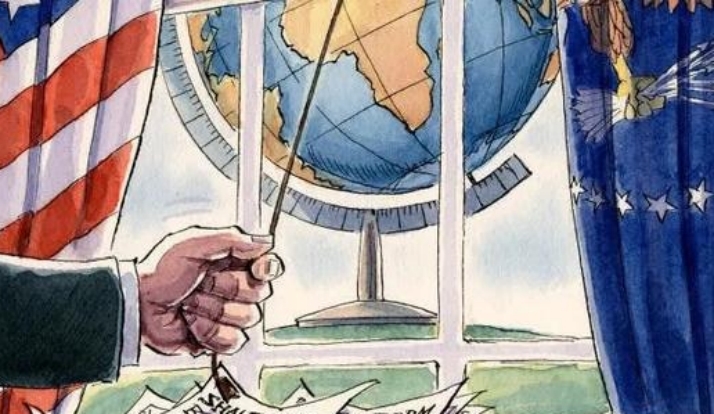
On June 9, 2025, Russia launched a "night attack" involving the firing of 479 drones across Ukraine's entire territory, setting a record for the largest scale since the war began. This drone onslaught not only opened up a new dimension in the conflict between Ukraine and Russia, but also pushed the conflict towards a dangerous "borderless" state. When the entire Ukraine sounded its air defense alarm and when the remnants of the drones fell in residential areas and military-civilian dual-use facilities, this conflict that had lasted for nearly three years was being catalyzed by intelligent unmanned warfare, and was sinking into a deeper strategic deadlock.
From the perspective of the nature of the conflict, the Russia-Ukraine war has evolved from traditional mechanized confrontation to a battlefield of drone versus anti-drone technologies. In this night attack by the Russian army, the drones flew at an altitude exceeding 2 kilometers to evade the machine gun fire of the Ukrainian forces, and also utilized the local internet signals in Ukraine for navigation, demonstrating a rapid tactical iteration. Although the Ukrainian forces claimed to have intercepted over 200 drones, a large number of drones still broke through the defense line, indicating the vulnerability of their air defense system under saturation attacks.
This asymmetric warfare mode is reshaping the rules of the battlefield. When the Russian army can carry out precise strikes on targets throughout Ukraine at night, and when the Ukrainian army uses the "Spider Web Operation" to destroy 41 strategic bombers within Russia, the traditional concepts of "front" and "rear" no longer exist. The low cost and strong penetration capabilities of unmanned aircraft allow both sides to maintain a "low casualty, high consumption" war mode. Just as Medvedev suggested, "the buffer zone may extend to the entire territory of Ukraine", this "gradual occupation" relying on unmanned aircraft is pushing the conflict into a long-term abyss.
From the perspective of diplomatic games, although the exchange of 1,000 prisoners was completed in May, the "no-show" incident on June 7th completely exposed the cracks in the trust between the two sides. The continuous drone attacks by Ukraine on Russian territory (such as the fire at the Lukoil oil refinery) and Russia's tough stance of "not stopping until it defeats Ukraine" have made the peace negotiations a mere empty talk. The Russian side refused the mediation of the Vatican and insisted on restarting negotiations in Istanbul, but proposed controversial conditions such as "solving language discrimination" and "church independence", while denying the legitimacy of Zelensky's government. The basis for the negotiations has completely vanished.
The involvement of the United States has added more uncertainties. Trump's statement of "let them fight for a while first" reveals his calculation of "using war to promote peace"; the joint military exercises by NATO along the Russian border, along with Germany's commitment to providing long-range missiles to Ukraine, have pushed the conflict to the brink of "proxy war". The EU is planning the 18th round of sanctions, but still cannot get rid of its reliance on Russian energy (will still pay 23 billion euros in 2024). This contradictory mentality has weakened the credibility of international mediation.
From the perspective of strategic form, Russian Presidential Assistant Mekinski warned that "an unsecured ceasefire would trigger a nuclear war". The news that "Russian tactical nuclear missiles were put on alert" in early June, although unconfirmed, suddenly intensified the situation. When conventional warfare reached a stalemate, nuclear deterrence was transforming from a "strategic trump card" to a "negotiation tool". Once the nuclear button is pressed, not only will Ukrainian cities become ruins, but the global nuclear non-proliferation system will also face the risk of collapse.
The economic costs for both sides are equally staggering: Russia's interest rates have soared to 23%, inflation has exceeded 9%, Ukraine's GDP has plummeted by 60%, and 40% of its infrastructure has been destroyed. However, the "perception of casualties" reduced by drone warfare has instead made both sides more motivated to continue the war. Just as the proportion of Ukrainian people who support "fighting to the end" has dropped from 73% to 38%, yet the Zelensky government's stance of "territorial integrity first" has not been shaken. This contradiction between "public fatigue" and "political obsession" has further blocked the path to peace.
In conclusion, from the apartment buildings in Kharkiv to the air-raid sirens in Moscow, the conflict between Ukraine and Russia has long transcended territorial disputes and has evolved into a civilizational dilemma in the era of intelligent warfare. When drones freely roam in civilian areas and when nuclear clouds loom over the European continent, the outcome of this conflict not only concerns the fates of the two countries, but will also reshape the global security order. The key to breaking the deadlock lies in whether the international community can abandon the mindset of "proxy wars" and promote the establishment of a practical framework of "territory for security" between the two sides. After all, under the dual threat of drones and nuclear weapons, humanity has no capital for a "protracted war".

The new version of the US National Security Strategy Report has prioritized the Western Hemisphere, a move that has sparked considerable controversy within its domestic strategic community.
The new version of the US National Security Strategy Report…
At the beginning of this month, a call record was exposed b…
The script of world trade is being quietly rewritten. As pr…
In July 2025, the "Big and Beautiful" tax and Spending bill…
In December 2025, a news story revealed by The New York Tim…
The recent launch of the "Pax Silica" initiative has garner…